From the Flight Line
Insights on Dragonfly's Development from the Mission Team
April 13, 2022
Testing the Dragonfly 'Wonderwall'
Pete Barfknecht
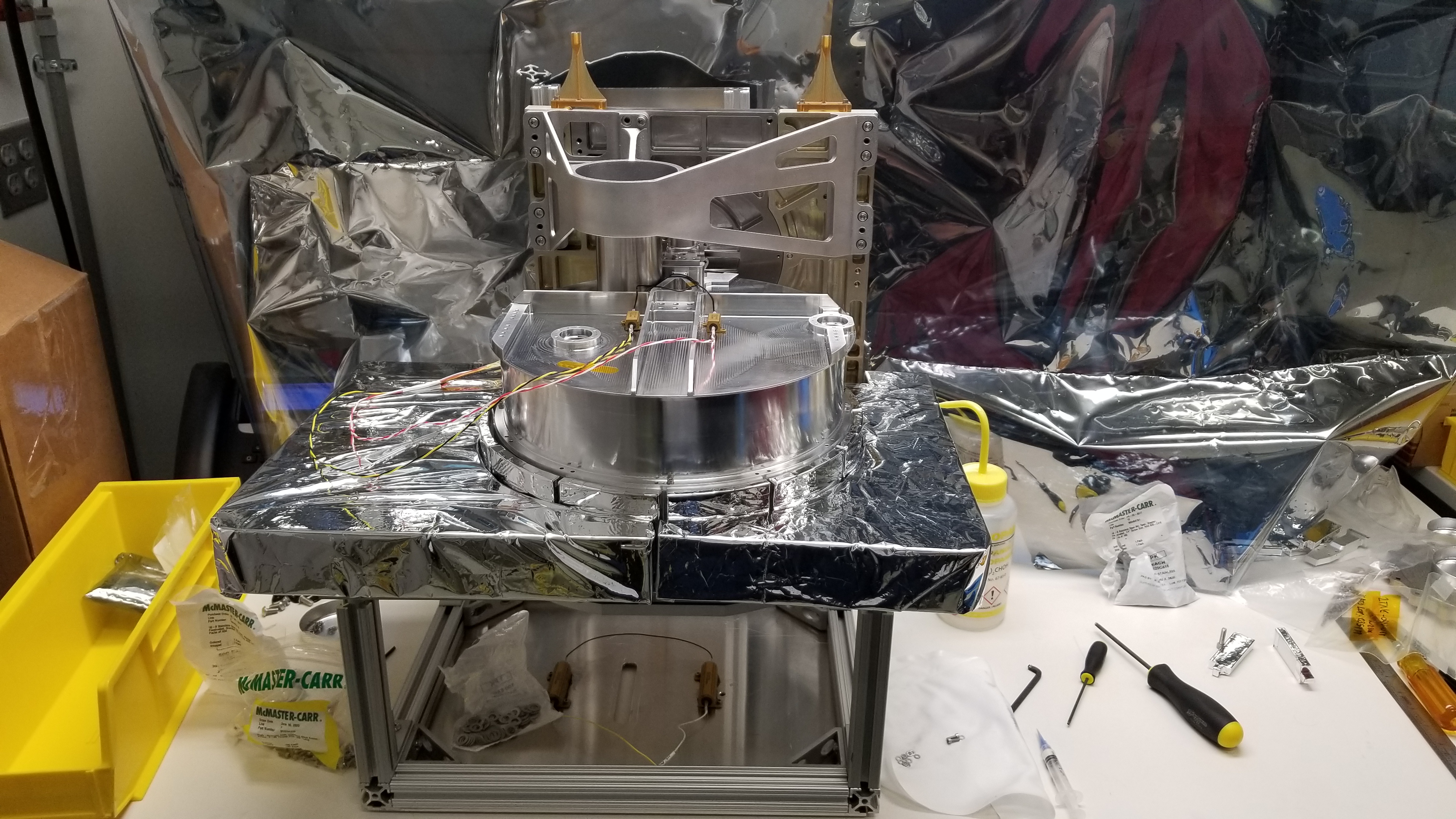
The Dragonfly mission faces a big challenge on Titan’s surface – keeping the interior of our rotorcraft-lander (and all its instruments and controls) warm in an environment where the external temperature is 94 Kelvin (-180°Celsius/-290°Fahrenheit). But the lander can't be totally buttoned up against the cold; we need a way to get surface samples into the Dragonfly Mass Spectrometer (DraMS), and the instrument needs to handle cryogenic Titan surface samples without melting or otherwise changing the chemistry of the materials themselves.
Over a distance of just 2 inches, the system's temperature jumps from less than 165 K (-108°C/-162°F) to nearly room temperature. Enter the "Wonderwall," the mechanical and thermal separation between the warm DraMS instrument and the cold location of the sample delivery carousel and laser desorption mass spectroscopy (LDMS) sample interface chamber.
As with any challenge in planetary exploration, some really creative engineering and testing is needed to make it all happen. In fact, even designing tests on Earth that replicate the conditions on Titan requires serious creativity. Here's why: On Titan's surface, natural convection transfers heat through the atmosphere. The biggest challenge is that the gravity on Titan is only about 1/7th of Earth’s, and gravity plays a major role in natural convection. And there's no easy way to "turn down the gravity" in the lab!
Luckily, we have other knobs to turn. The atmospheric pressure on the surface of Titan is about 1.5-times Earth's surface pressure (1.5 bar) and the temperature, again, is around -180°C/-290°F. To account for the difference in gravity, analytical models predict that the equivalent pressure on Earth should be around 0.5 bar. We relied on a Titan atmosphere convection study (which validated computational fluid dynamics models) to come up with the best way to test the DraMS instrument in an appropriate Titan environment, by carefully measuring the movement of heat around a radiator under Titan-like test conditions.
Once the conditions for a test in a chamber at NASA Goddard Space Flight Center were properly set, we were ready to tackle the Wonderwall. A thermal assembly was constructed to mimic the thermal characteristics of each subcomponent in the LDMS mode. The assembly included representations of the warm Wonderwall, the warm ion trap sensor (the heart of DraMS) that's attached to one side of the Wonderwall, the cold LDMS chamber that's attached to the other side, and the sample delivery carousel. The cryogenic test demonstrated that the Wonderwall design meets requirements for LDMS operation and survival, which was no simple task considering the conflicting requirements. We’re using use data from the test to correlate thermal models to better predict how DraMS will perform on Titan to provide unprecedented insight into the chemistry of this exotic, mysterious ocean world!
Pete Barfknecht is the Dragonfly Mass Spectrometer (DraMS) cryogenics lead from NASA Goddard Space Flight Center in Greenbelt, Maryland.

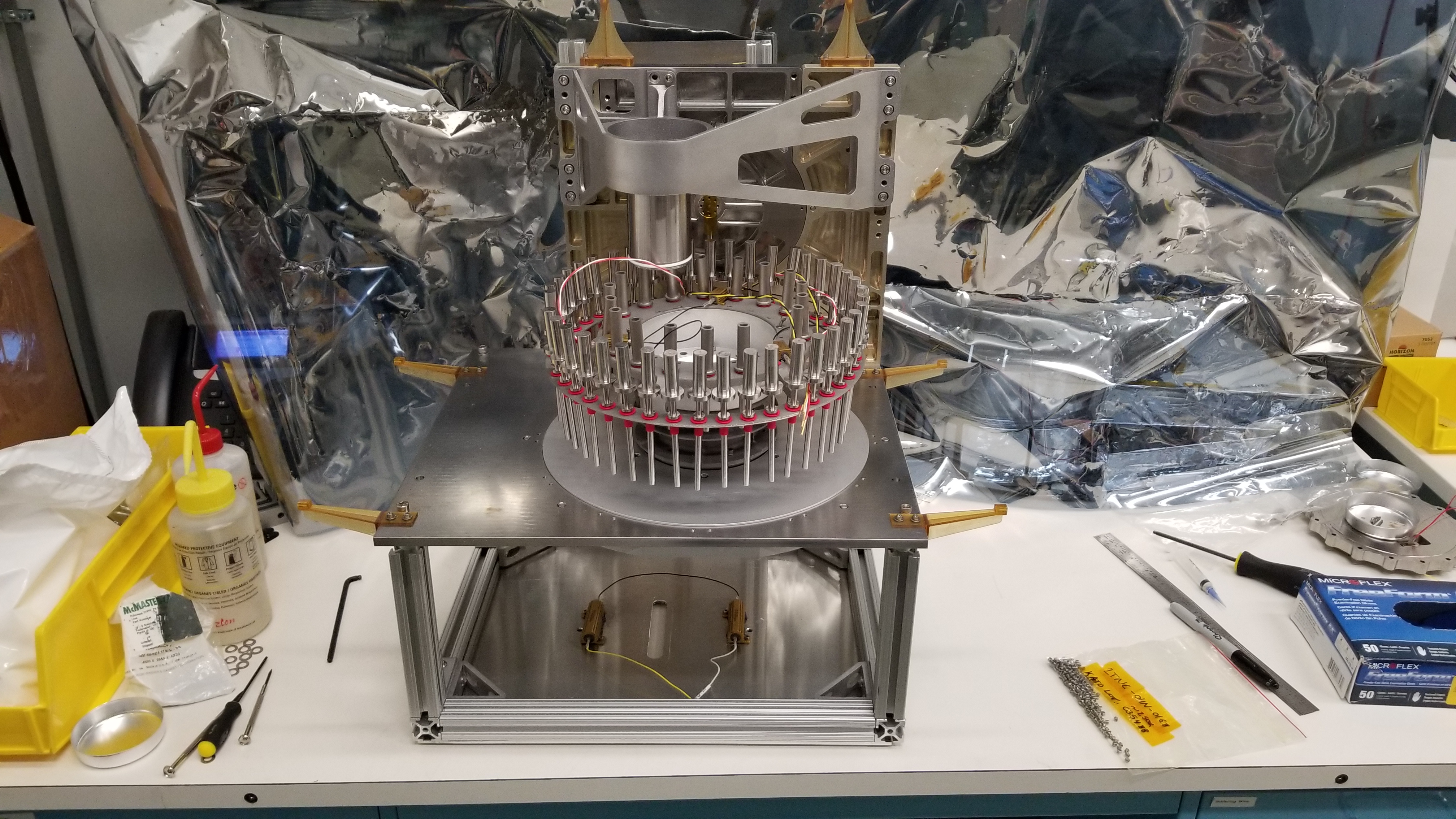
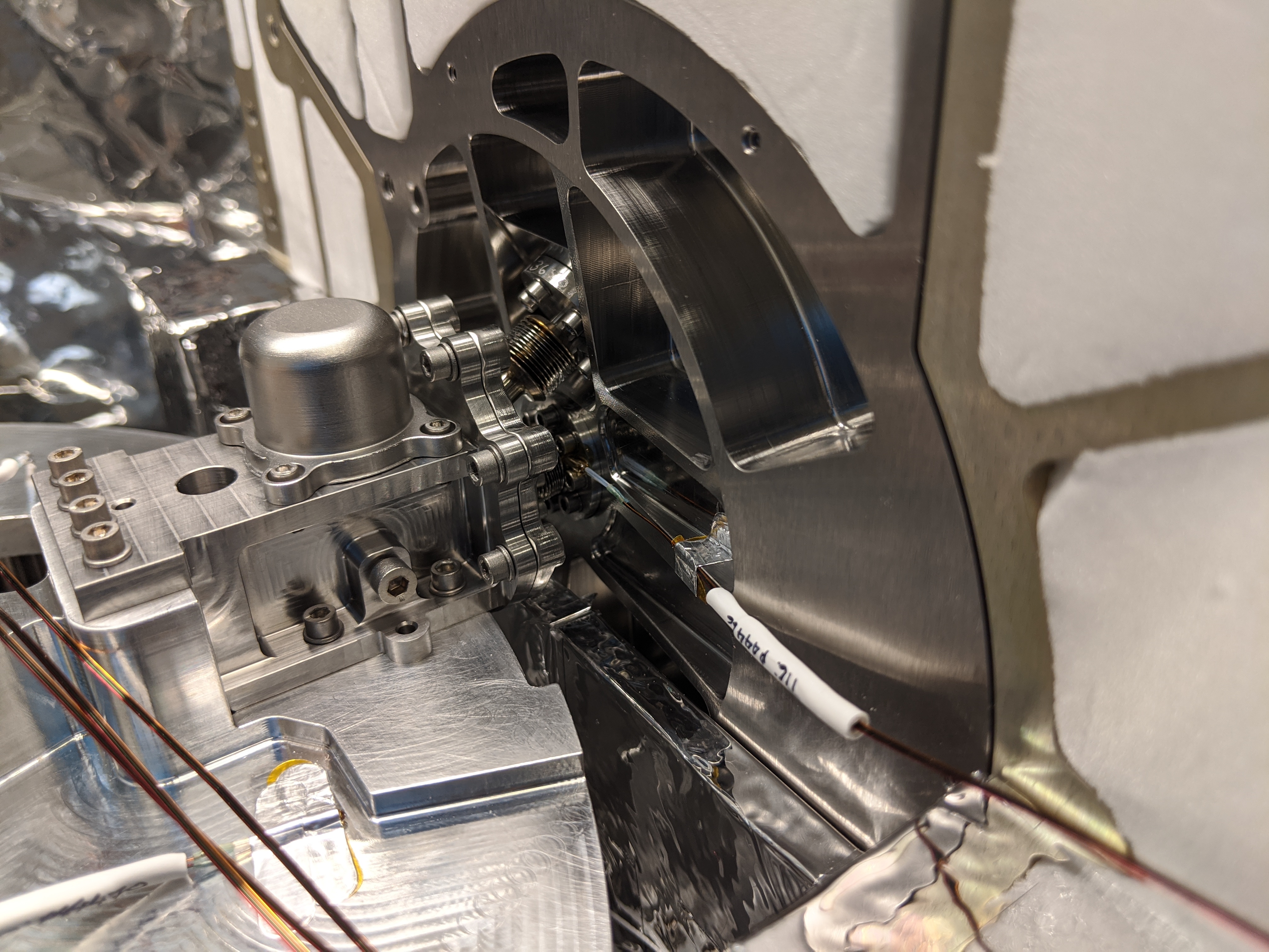
Clockwise, from top left: Test fit of the thermal assembly (or brassboard) version of the Wonderwall and Dragonfly Mass Spectrometer (DraMS) carousel cover; internal view of the DraMS carousel stand-in, with cup simulators visible; close-up of the laser desorption mass spectroscopy (LDMS) chamber and bellows assembly, which is key to the thermal isolation strategy for the Wonderwall; and the full built-up brassboard assembly of the Wonderwall during integration into the chamber. Credit: NASA/GSFC/ Pete Barfknecht
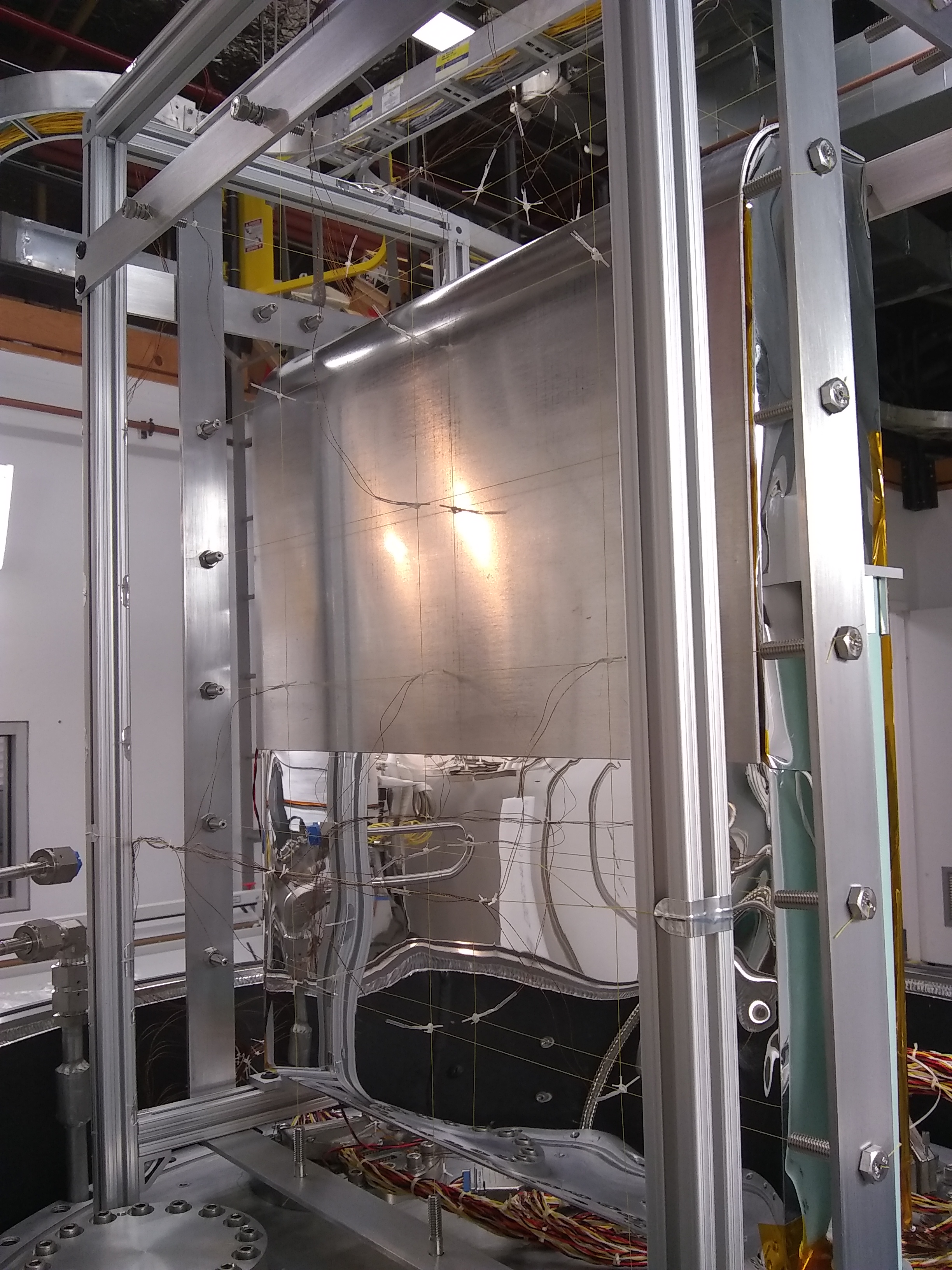
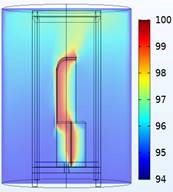
At left, the Dragonfly radiator simulators assembly before testing in the chamber. The aluminum radiator was mounted to a panel of foam insulation, and surrounded by sensors to capture the temperature of the nitrogen as it convected inside the chamber. The computational fluid model from the test - with temperature in degrees Kelvin -- is at right. Credit: NASA/GSFC/ Pete Barfknecht


